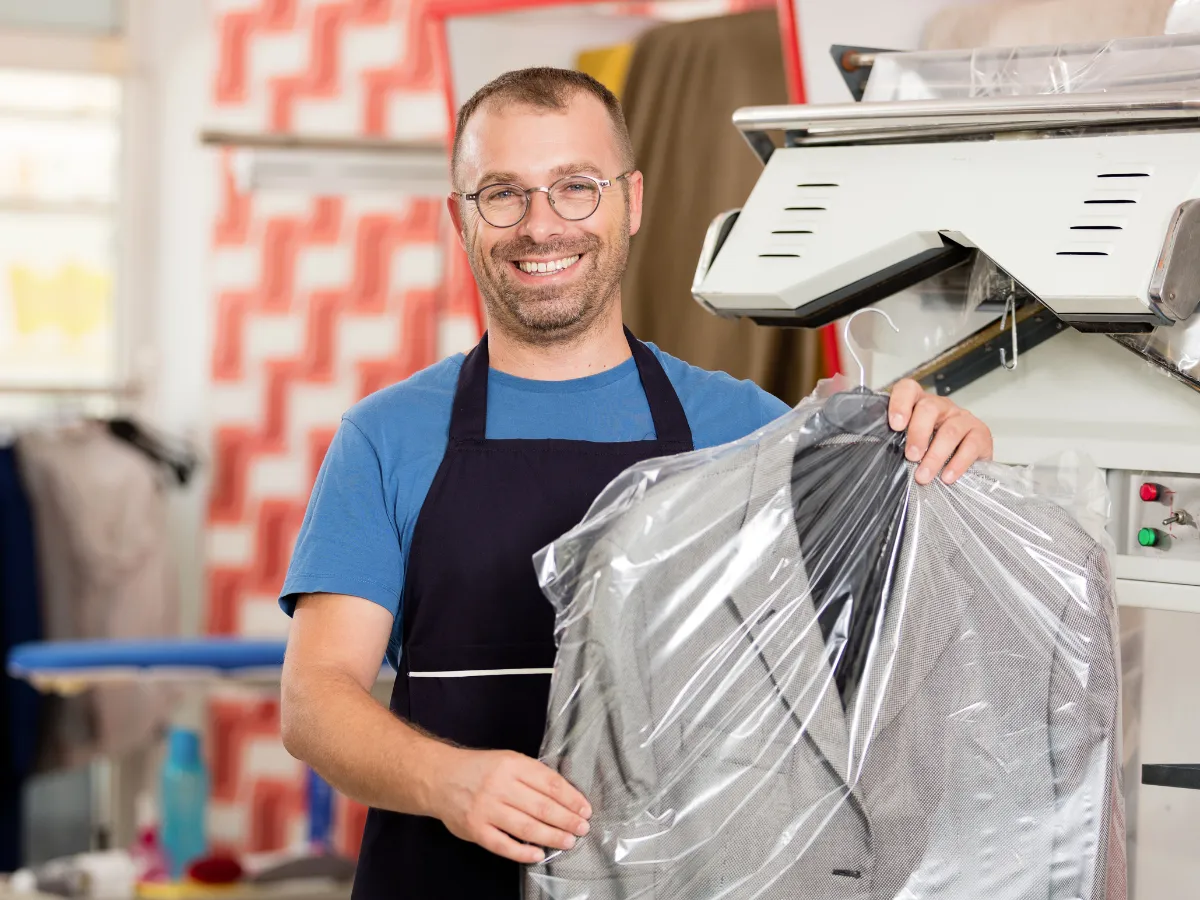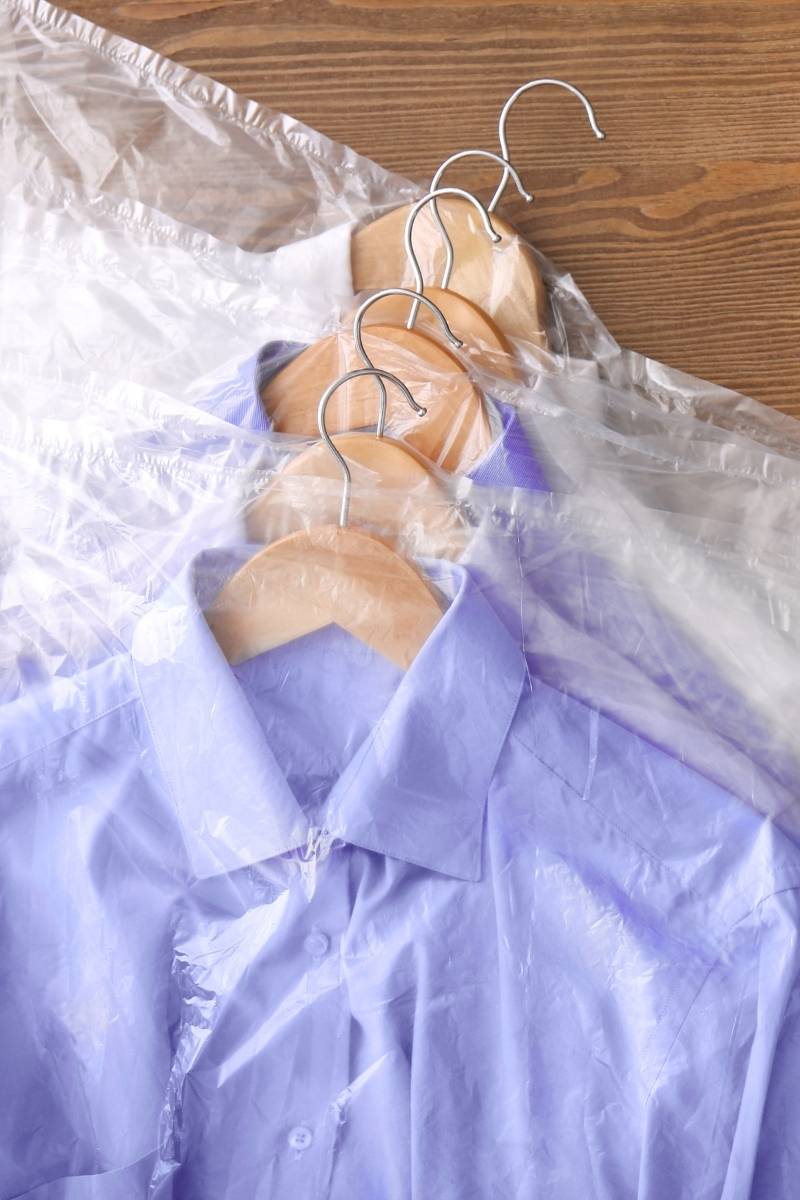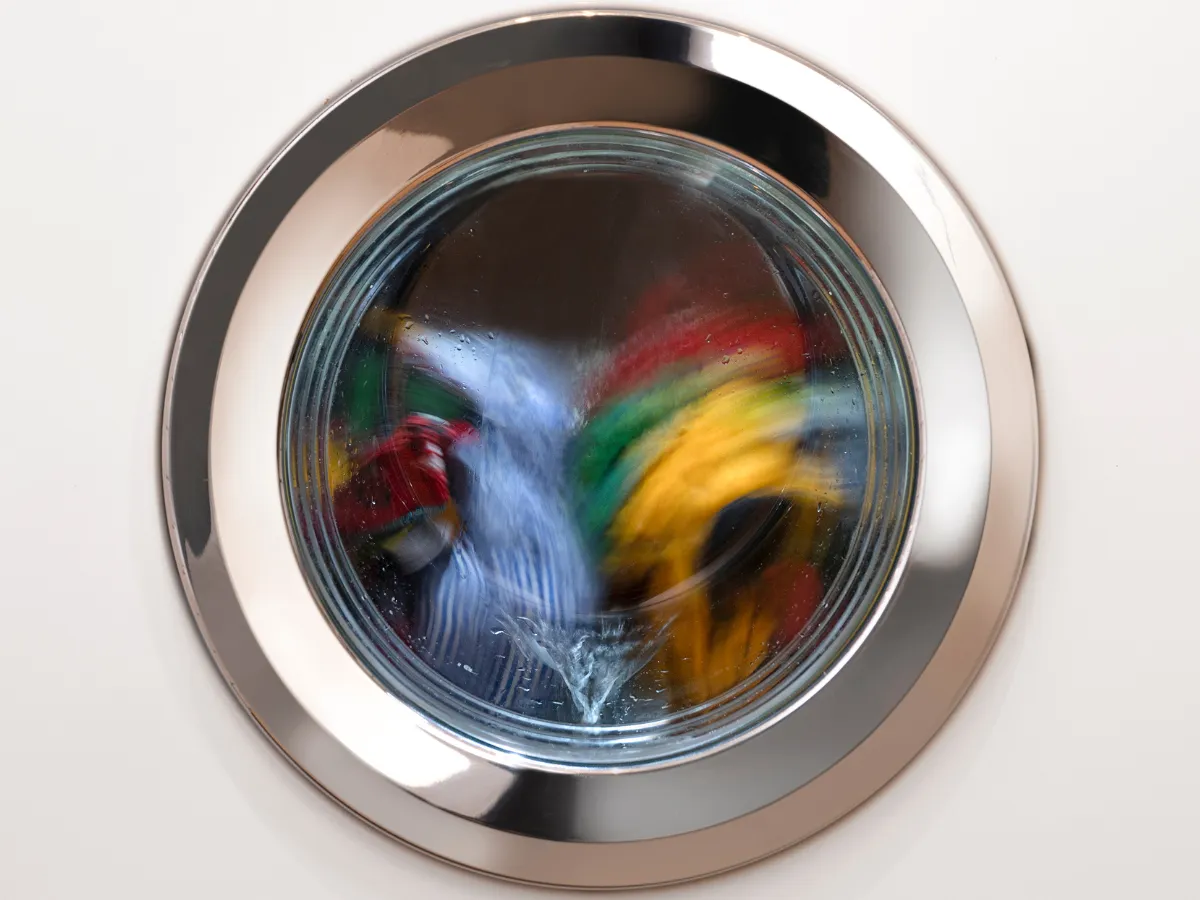Unveiling the Mystery: What is Dry Cleaning Really?

You've surely seen the "Dry Clean Only" instruction on the label of some of your favorite garments, like a suit, an elegant wool coat, or a silk dress. This instruction can cause confusion: does it mean the garment doesn't get wet? Can you do something similar at home? Understanding what dry cleaning really is is fundamental to properly care for certain garments and avoid irreparable damage.
In this article, we'll demystify the dry cleaning process, explaining what it consists of, what products it uses, when it's necessary to resort to it, and what alternatives exist (and which ones aren't quite the same). Get ready to become an expert in caring for your most delicate garments!
What Does "Dry Cleaning" Really Mean?
Contrary to what its name might suggest, dry cleaning is not a process completely devoid of liquids. The key is that it does not use water as the primary cleaning agent. Instead, it employs special liquid chemical solvents capable of removing dirt, grease, and certain types of stains without damaging water-sensitive fibers.
Water, although an excellent universal cleaner, can be harmful to certain fabrics. It can cause shrinkage (especially in wool), deformation, color loss, damage to delicate embellishments (sequins, beads), or alter the texture of materials like velvet or suede. Dry cleaning avoids these problems by using solvents that clean effectively without causing these adverse reactions.
The Hidden Protagonists: What Liquid is Used for Dry Cleaning?
The "magic liquid" of dry cleaning isn't just one thing. Various types of solvents exist, and the choice depends on the fabric type, color, stain, and environmental regulations. The most common historically and currently include:
- Perchloroethylene (PCE or "Perc"): It has been the most widely used solvent for decades due to its strong cleaning power, especially on grease and oil stains. However, it's a potent chemical classified as a probable carcinogen and has a considerable environmental impact if not handled and recycled correctly. Its use is increasingly regulated.
- Hydrocarbon Solvents (HC): A milder and less aggressive alternative to PCE, derived from petroleum. They are less effective on some very greasy stains but safer for the environment and health, and gentler on embellishments like plastic buttons or sequins.
- Liquid Silicones (e.g., Siloxane D5): Considered a greener option and very gentle on fabrics and colors. They are biodegradable and non-toxic. Their cleaning power is good, although potentially slightly less than PCE for certain stains.
- Others (Less common): Other solvents like liquid CO2 or special formulations exist but are less common in conventional dry cleaners.
Professional dry cleaners know which solvent is appropriate for each garment based on the label and their experience.

When is Dry Cleaning Essential? Key Signs
Rule number one is always to consult the garment's care label. If you see a circle (empty or with a letter inside like P, F, or A), it means the garment REQUIRES or recommends professional dry cleaning.
Generally, you will need to take garments made of the following materials to the dry cleaner:
- Wool (100% or delicate blends): Especially suits, coats, fine sweaters that shrink easily. Check our guide on how to wash wool coats for more details.
- Natural Silk: Very sensitive to water and friction. Dry cleaning preserves its shine and texture.
- Velvet and Corduroy: Water can crush or irreversibly alter the texture of these fabrics.
- Leather and Suede: Water hardens, cracks, and can stain them. They require specialized cleaning (often indicated by an F inside the circle). Learn about how to clean suede here.
- Rayon (Viscose), Acetate, Triacetate: Man-made fibers that can easily shrink, deform, or lose color with traditional washing.
- Structured Garments: Such as suit jackets with interlinings, shoulder pads, etc., which could become misshapen by water.
- Garments with Delicate Embellishments: Sequins, beading, complex embroidery, feathers, etc., which could be damaged or detach in the washing machine.
- Ties: Usually made of silk and have an internal structure that deforms with water.
The Professional Process: How a Dry Cleaner Works
Taking a garment to the dry cleaner involves more than just putting it in a machine. The professional process is meticulous:
- Reception and Inspection: The garment is checked, visible stains are identified, and the label is consulted. Stains are marked for special treatment. The garment is tagged to avoid mix-ups.
- Pre-spotting: Difficult stains (ink, wine, set-in grease) are manually treated with specific stain removers before the general cleaning. This is a crucial step requiring expertise.
- Sorting: Garments are grouped by fabric type, color, and soil level to be cleaned together in appropriate cycles.
- Machine Cleaning: Items are placed in a dry cleaning machine, similar in appearance to a large washing machine but operating in a closed loop. The machine uses the chosen solvent, filters it, and recirculates it during the cleaning cycle. Temperature and mechanical action are controlled to protect fabrics.
- Extraction and Drying: At the end of the cleaning cycle, the machine spins gently to extract most of the solvent. Then, a controlled flow of warm air evaporates the remaining solvent.
- Solvent Recovery: The evaporated solvent is cooled and condensed to be filtered, distilled, and reused in future cycles, minimizing waste and environmental impact.
- Finishing: Once dry, garments are inspected again. Any remaining wrinkles are removed through professional ironing, pressing, or steaming, restoring their original shape and appearance.
- Bagging: Finally, the clean and pressed garment is covered with a protective bag.
"Dry Cleaning" at Home? Clarifying Concepts
There's much confusion about whether true dry cleaning can be done at home. The short answer is no, at least not like at a professional dry cleaner.
- Home Dry Cleaning Kits: These kits (available in supermarkets) usually consist of a wipe impregnated with a mild cleaning solution and a special bag. You put the garment and the wipe in the bag, then into your home dryer on a low heat cycle. This is NOT dry cleaning. It doesn't use specific solvents or remove set-in dirt. It primarily serves to refresh garments, remove light odors, and treat very superficial stains. They can be useful for extending time between dry cleaner visits but don't replace a deep clean. Learn more about using these methods in how to dry clean a jacket at home.
- Delicate Hand Washing: Some garments labeled "Dry Clean Recommended" might be hand-washable with extreme care, cold water, and wool/silk detergent, but always assuming some risk.
- Washers with "Steam" or "Refresh" Functions: Some modern washing machines have cycles that use steam to refresh garments and remove light wrinkles. Again, this is not dry cleaning and doesn't effectively remove dirt or stains.
In summary: Home washing machines do not perform dry cleaning. If the label says "Dry Clean Only," the dry cleaner is the only safe option.
Pros and Cons of Professional Dry Cleaning
Advantages
- Protects delicate fibers (wool, silk...).
- Prevents shrinkage, deformation, and color loss.
- Very effective against oil and grease stains.
- Preserves the original texture and drape of garments.
- Extends the lifespan of high-quality clothing.
Disadvantages
- More expensive than water washing.
- Use of chemicals (though increasingly safer and greener).
- Potential environmental impact if solvents aren't managed well.
- Less effective on water-based stains (sweat, some drinks) if not properly pretreated.
- Requires taking clothes to a specialized establishment.
Frequently Asked Questions about Dry Cleaning
How is dry cleaning performed?
Using special machines that clean clothes with liquid chemical solvents instead of water, followed by controlled drying and pressing.
What is dry cleaning at home?
Usually refers to kits for use in the dryer that refresh clothes and remove light stains, but it's not true dry cleaning like at a professional cleaner.
How is dry cleaning of clothes done?
At dry cleaners, it involves inspection, pre-spotting, washing with solvents in a machine, drying, and finishing/pressing.
What liquid is used for dry cleaning?
Mainly perchloroethylene (PCE), hydrocarbon solvents, or liquid silicones, depending on the garment and the dry cleaner.
Dry cleaning is a specialized technique essential for the care of many of our most valuable or delicate garments. Although we cannot replicate it faithfully at home, understanding how it works helps us make better decisions about caring for our clothes and appreciate the expert work of professional dry cleaners.
Delicate Garments? At LaColada, We Care for Your Clothes!
While LaColada Self-Service Laundry Ponferrada specializes in traditional water washing and drying, we perfectly understand that some garments require special care like dry cleaning. If you have doubts about how to wash a delicate item or if it needs professional cleaning, don't hesitate to ask us! We can offer advice on using our delicate programs or indicate when it's best to seek specialized dry cleaning services to ensure the longevity of your favorite garments. Your clothes, in the best hands!
Visit LaColada Ponferrada
Sebastián R.
More than 10 years at the helm of Lacolada Lavanderia Autoserivico Ponferrada and repairing industrial and domestic machinery in my spare time. You won't find unverified theories from the internet here, just real solutions tested by someone who gets their hands dirty every day.
Explore Other Laundry Topics

How to Dry Clean a Jacket at Home
Home alternatives to freshen up jackets without a washer.

What is the Spin Cycle in a Washing Machine?
Understand this key function for faster drying.

How to Wash Linen to Keep it Perfect
Specific care for this cherished natural fabric.